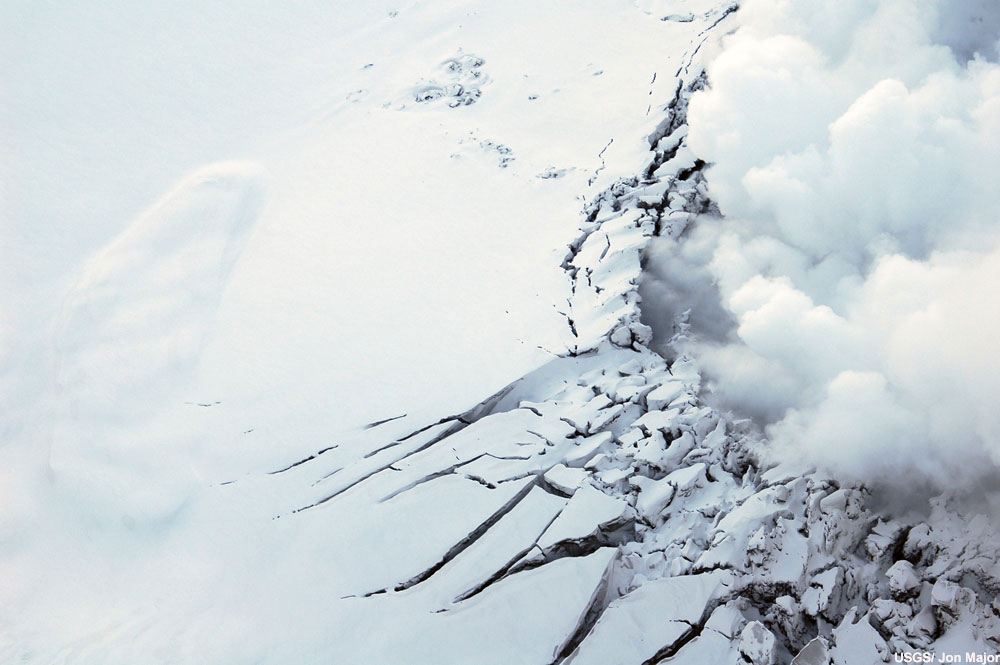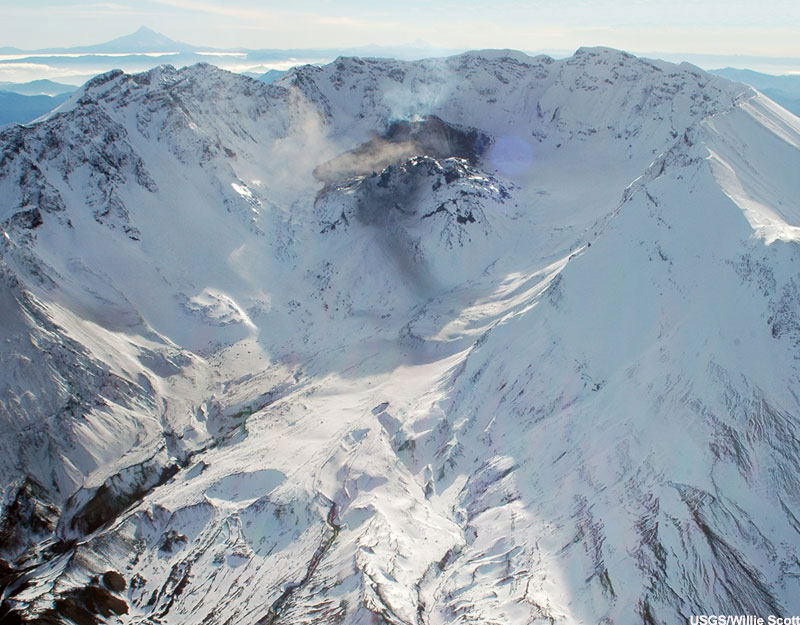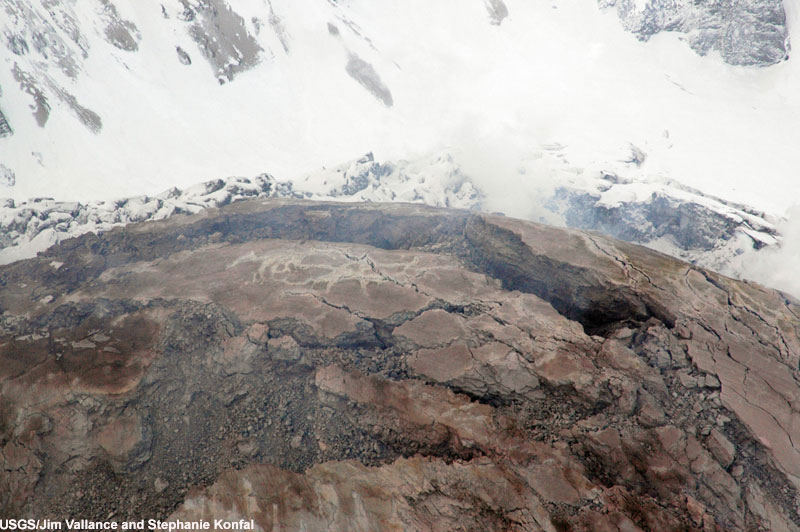Rumbles in 2004: Mount St. Helens Wakes Up
Inside View

The image above, taken on November 29, shows from the east, a view of the glacier uplift against the south crater wall. The new lava and its surrounding uplifted welt pushed up against the south crater wall. The lava, a whaleback-shaped extrusion, increased sufficiently in height that it could be seen from the Johnston Ridge Observatory visitor center (JRO). The FLIR infrared camera noted substantial temperature readings (upward of 400 degrees C) only on the southwest and west sides of the whaleback flow. Maximum reading was 500 degrees. Also, a eulogy was given for "Elevator," the GPS receiver that was slung into the crater and set upon the new lava extrusion. It became a victim of gravity after eight days atop its lumbering lava steed.
Rising, Rising…

This image was taken on December 2, showing a southwest view of glacial uplift. During the week of December 3 – December 9, was a repeat of last week’s seismic activity in nearly every way. The earthquake counts remained low, with characteristic events of magnitude 1.5 occurring every 60-90 seconds. Like the previous week, several larger earthquakes again shook the crater floor. A notable finding was small displacement of a GPS receiver high on the volcano's southeast flank. Total deflection on Dec 9: about 4 cm (1.5 inches) southeast, or about 2 millimeters per day in the eighteen days since November 20. It is thought to result from the banking of new lava against the inner crater wall.
Side by Side Comparison

Mount St. Helens crater from the east, with new dome (on left in crater), from December 11, 2004. The 1980-86 dome is in the crater on the right.
Mount St. Helens Settles Down

Shown above is a view of Mount St. Helens from the northwest. Mount Hood (left) and Mount Jefferson (middle) are on the skyline. Growth of the new lava dome inside the crater of Mount St. Helens continues, accompanied by low rates of seismicity, low emissions of steam and volcanic gases, and minor production of ash. It is noted that during such eruptions, episodic changes in the level of activity can occur over days to months. This image was taken on December 16, 2004.
Quiet…But Still a Potential Threat

This is a photograph of Mount St. Helens from the Johnston Ridge Observatory (JRO), taken on December 23, 2004. There was not a significant change in the activity at the volcano; steam and volcanic gases, and minor production of ash evident. Scientists believe the eruption could also intensify suddenly or with little warning and produce explosions that cause hazardous conditions within several miles of the crater and farther downwind. Small lahars could suddenly descend the Toutle River if triggered by heavy rain or by interaction of hot rocks with snow and ice.
Predictions for 2005?

This is a picture of the top of Mount St. Helens' new dome from the east, taken on December 28, 2004. Certainly, Mount St. Helens roared back to life in 2004. Mount St. Helens began showing signs of life in late September sending clouds of steam and ash over southern Washington. Since then, the volcano has been steadily active, and most significantly, a new lava dome has formed. Scientists continue to closely monitor the volcanic activity at Mount St. Helens; many are convinced that after more than twenty years since the last mass of eruptions in 1980, it will do so again. So the question that many ponder is “What does Mount St. Helens have in store for 2005?
Get the world’s most fascinating discoveries delivered straight to your inbox.


